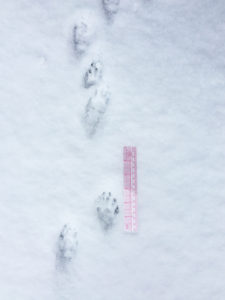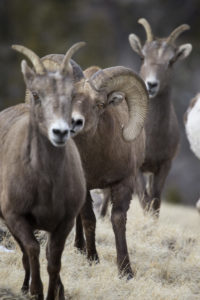By Lead Nature Mapping Volunteer Frances Clark
Late fall, early winter is a time of adjustment for wildlife, as well as us. The increasing cold and diminishing food in November encourages movement of species. Many warm bodied critters have left the valley, while others stay here. Winter residents must hibernate, or they must balance their energy budget: conserving their energy use by resting in warm, protected locations or adding to their energy stores by moving and finding sufficient food.
Some small mammals disappear but others are active. Look for any chipmunks, mice, or voles that may still be seeking seeds, fruits, and invertebrates. They will soon hibernate or go into a torpor. Record these stalwart individuals if you see them. Red squirrels stay up and about to defend their cone stashes vociferously. At night skunks and raccoons are roaming for food and then hunker underground or around buildings for warmth. Fox and coyotes are padding along trails and through fields looking for all the above as their main meal. Long- and short-tailed weasels are turning white and also darting about for prey. Have you seen a bear as a last of year (LOY) entry?
Many of the above critters are usually invisible to us; however, with a skim of snow their tracks prove they are here. Some, such as snowshoe hares, are actually best noted in winter. Pull out your winter-tracking field guides, find a 6-12” ruler to measure the footprint size and stride, and determine whose prints cross your path. Under “activity” enter “animal sign: tracks, scat”, under “notes” your ID details. If possible, attach a photograph of the prints with a ruler for scale (a new feature on our data entry form!) to help our biologists verify your entry. It is fun to record the mysterious dramas going on in our neighborhoods and wild places.
Large mammals are shifting venues, too. Watch for elk and deer crossing roads and grazing in pastures. Where are they now? Keep an eye on the buttes to see if the mule deer are coming back to their traditional winter range, or have the summer fires on East Gros Ventre Butte caused them to shift elsewhere? Where are the bison hanging out? Bighorn sheep are coming into the Elk Refuge. Can you record their “territorial” or “breeding” activity in the next few weeks? And moose: are they bunching up at Antelope Flats? What are they eating? They often prefer antelope bitterbrush at this time of year.
Look and listen for birds*. Trumpeter swans are migrating down from Canada, adding numbers to our resident population. Where are they resting/loafing, and which routes are they flying? See if there is a tundra swan mixed in. Which ducks are feeding in open ponds and streams? Remember, some may be in “basic” (e.g.. non-breeding or dull winter) plumage—an ID challenge. Grouse—ruffed and dusky–are in the forests; and nuthatches, juncos, golden-crowned kinglets, and chickadees forage in mixed flocks. The corvid family: ravens, crows, Canada jays, Steller’s jays, and Clark’s nutcrackers often come down from higher elevations and into town when there is deep snow and cold—they are smart. Cooper’s hawks take advantage of birds congregating at bird feeders. Use your binoculars to spy soaring rough-legged hawks or fleeting groups of snow buntings and horned larks in open grasslands. Or find kettles of ravens and eagles over a gut pile.
There is plenty to Nature Map in Jackson Hole these next few weeks. The new entry form makes it easier than ever. Your sightings are extremely important to indicate which wildlife habitats are essential for winter survival. Keep on mapping! Thank you.
*Note: The JH Bird and Nature Club will be hosting a “Winter Bird ID” program December 10th. See the Calendar of Events below for details.



